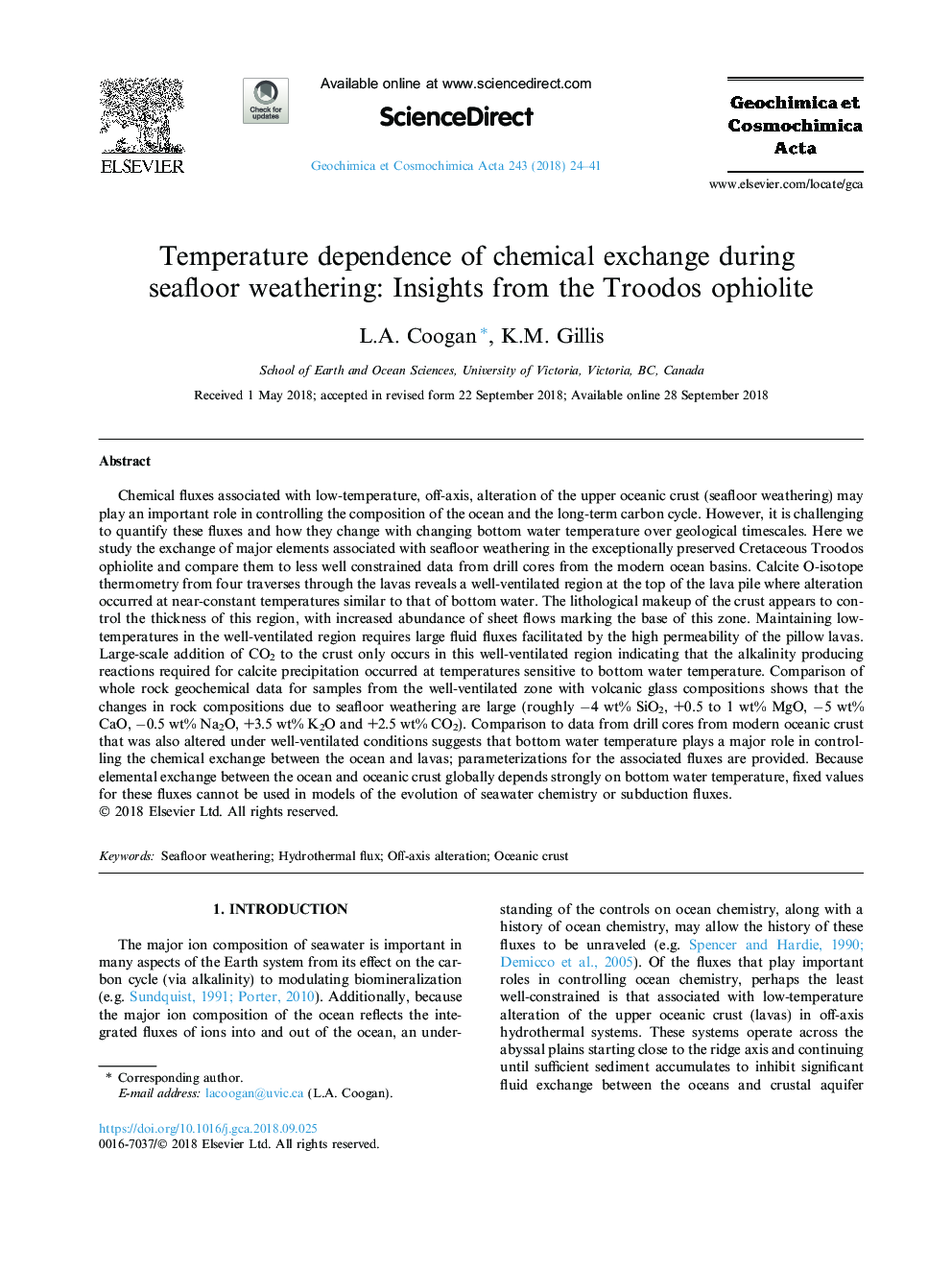| کد مقاله | کد نشریه | سال انتشار | مقاله انگلیسی | نسخه تمام متن |
|---|---|---|---|---|
| 11001903 | 1353702 | 2018 | 18 صفحه PDF | دانلود رایگان |
عنوان انگلیسی مقاله ISI
Temperature dependence of chemical exchange during seafloor weathering: Insights from the Troodos ophiolite
ترجمه فارسی عنوان
وابستگی درجه حرارت مبادله شیمیایی در هوای فصلی دریایی: مشاهدات از افیولیت تروودوس
دانلود مقاله + سفارش ترجمه
دانلود مقاله ISI انگلیسی
رایگان برای ایرانیان
کلمات کلیدی
موضوعات مرتبط
مهندسی و علوم پایه
علوم زمین و سیارات
ژئوشیمی و پترولوژی
چکیده انگلیسی
Chemical fluxes associated with low-temperature, off-axis, alteration of the upper oceanic crust (seafloor weathering) may play an important role in controlling the composition of the ocean and the long-term carbon cycle. However, it is challenging to quantify these fluxes and how they change with changing bottom water temperature over geological timescales. Here we study the exchange of major elements associated with seafloor weathering in the exceptionally preserved Cretaceous Troodos ophiolite and compare them to less well constrained data from drill cores from the modern ocean basins. Calcite O-isotope thermometry from four traverses through the lavas reveals a well-ventilated region at the top of the lava pile where alteration occurred at near-constant temperatures similar to that of bottom water. The lithological makeup of the crust appears to control the thickness of this region, with increased abundance of sheet flows marking the base of this zone. Maintaining low-temperatures in the well-ventilated region requires large fluid fluxes facilitated by the high permeability of the pillow lavas. Large-scale addition of CO2 to the crust only occurs in this well-ventilated region indicating that the alkalinity producing reactions required for calcite precipitation occurred at temperatures sensitive to bottom water temperature. Comparison of whole rock geochemical data for samples from the well-ventilated zone with volcanic glass compositions shows that the changes in rock compositions due to seafloor weathering are large (roughly â4 wt% SiO2, +0.5 to 1 wt% MgO, â5 wt% CaO, â0.5 wt% Na2O, +3.5 wt% K2O and +2.5 wt% CO2). Comparison to data from drill cores from modern oceanic crust that was also altered under well-ventilated conditions suggests that bottom water temperature plays a major role in controlling the chemical exchange between the ocean and lavas; parameterizations for the associated fluxes are provided. Because elemental exchange between the ocean and oceanic crust globally depends strongly on bottom water temperature, fixed values for these fluxes cannot be used in models of the evolution of seawater chemistry or subduction fluxes.
ناشر
Database: Elsevier - ScienceDirect (ساینس دایرکت)
Journal: Geochimica et Cosmochimica Acta - Volume 243, 15 December 2018, Pages 24-41
Journal: Geochimica et Cosmochimica Acta - Volume 243, 15 December 2018, Pages 24-41
نویسندگان
L.A. Coogan, K.M. Gillis,
